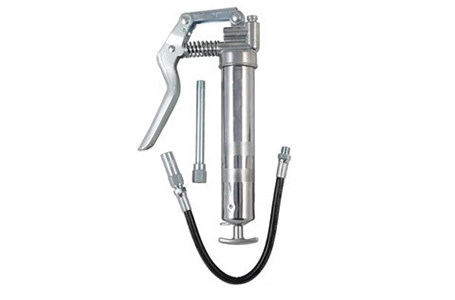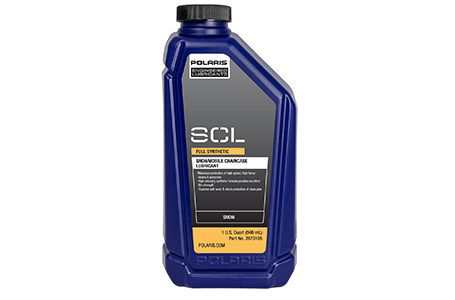
Snowmobile Maintenance for a Sled That Shreds All Winter Long
Modern snowmobiles are remarkably reliable and easy to operate thanks to advanced fuel systems and durable designs, but like most other machines, snowmobiles require routine maintenance to preserve dependability and safety. Track tension, condition of the skis and runners, and operation of the brake and throttle should be checked before each ride. Annual snowmobile maintenance requires a deeper dive to inspect the machine’s track, skis, suspension, clutches, chaincase and more. Here’s how to inspect.
Troubleshoot tracks
A properly tensioned and aligned track contributes to better fuel economy and less wear on drivetrain components, making track adjustment an important part of snowmobile maintenance.
The first step of snowmobile track pre-season maintenance is to inspect it for damage and wear. Look for torn lugs, missing chunks and separated layers (delamination). Also check for worn, missing or bent track clips, which typically can be replaced if necessary. Damage that affects a track’s structural integrity warrants track replacement. If you’re unsure, have it inspected by an experienced snowmobile mechanic.
To check track alignment, choose a point on the suspension rail – such as where a cross-shaft is fastened between the rails – and measure the distance from the edge of the track to the specific location you chose. Measure each side. If there is a difference, the track needs to be adjusted to the left or right so the rear suspension will be centered within the track. After snowmobile track alignment has been set, track tension can be adjusted.
As a rule for track tension, there should be a roughly 1.25-inch gap between the track and slide rail when 10 pounds of downward pressure is applied to the track at a point about 12 inches in front of the suspension’s rear axle. The gap specification varies by snowmobile based on suspension and track design, among other variables. Consult your owner’s manual.
Align skis
Just like a car with wheels that roll true and straight, a snowmobile will handle most predictably and be easiest to drive when its skis and track are properly aligned. Skis should toe out up to one-quarter of an inch, meaning the distance between tips should be slightly more than the distance between the tails. Ski alignment should be checked – and adjusted, if necessary – after track tension and alignment has been set.
Check Suspension
Elevate the rear end of the snowmobile and inspect the rear suspension. Check the hyfax, which run along the bottom of the suspension rails, to make sure there is adequate wear material. If not, they should be replaced as a set. Check and spin each wheel – looking for cracks and damage, and ensuring they spin freely and quietly. Inspect hardware and bolted joints to make sure nuts and bolts are tight.
Another important snowmobile maintenance procedure is to lubricate the rear suspension with low-temp grease for snowmobiles. Injecting grease through the grease zerks will push out corrosion-causing moisture from within cross tubes and help keep the suspension moving freely. Consult the owner’s manual for specific locations of grease zerks.

Inspect the belt & clean your clutches
With the belt in hand, carefully examine for damage and wear. Look closely at the sidewalls for exposed cords and thin spots. Inspect the top and bottom surfaces for cracks and delamination. If the belt shows any of this wear or damage, it should be discarded and replaced with a new one.
Belt sidewalls that are shiny and glazed but otherwise look OK can be rehabilitated by lightly scrubbing with a wire brush or by sanding with a piece of emery cloth. Inspect the clutch faces, too, because they will also be glazed.
Glaze is a condition that contributes to belt slip, which causes a loss of performance and increased wear to the belt and clutch faces. Use light hand pressure with emery cloth or a scuff pad like Scotch-Brite to remove the glaze from the faces of both clutches.
After removing the glaze, wash the clutches with warm, soapy water, and then wipe the faces with a clean shop towel that’s been soaked with isopropyl alcohol or acetone. This will ensure all belt residue and abrasives have been flushed away. Have an experienced snowmobile mechanic inspect the clutch weights, bushings, rollers and springs.
Change the chaincase oil & check brake fluid
Annual snowmobile maintenance should also include servicing the chaincase by changing the oil and setting the chain tension. Procedures vary by machine brand, year and model, but in most cases the service can be performed by anyone who has basic mechanical skills and tools.
If brake fluid is dark in color or more than a few years old, it should be replaced by an experienced mechanic.

Check electrical
Just because the sun goes down is no reason to stop riding for the day … unless your snowmobile’s lights don’t work. Make sure the high and low headlight beams function properly and confirm the tail and brake lights work, too. And don’t forget about the gauge lights. If your snowmobile is equipped with a battery, make sure it’s charged up and ready. The hand and thumb warmers should feel warm after the engine idles for a few minutes.
Snowmobile Maintenance for dependability & safety
Performing routine inspections and maintenance helps keep snowmobiles dependable and safe to ride. By following the recommendations above, you’ll enjoy years of trouble-free snowmobile riding.



